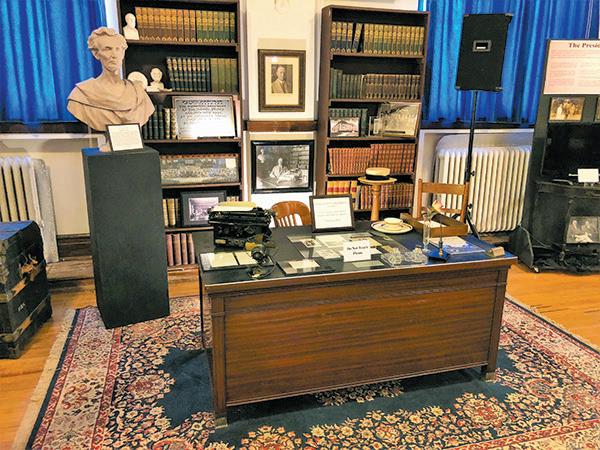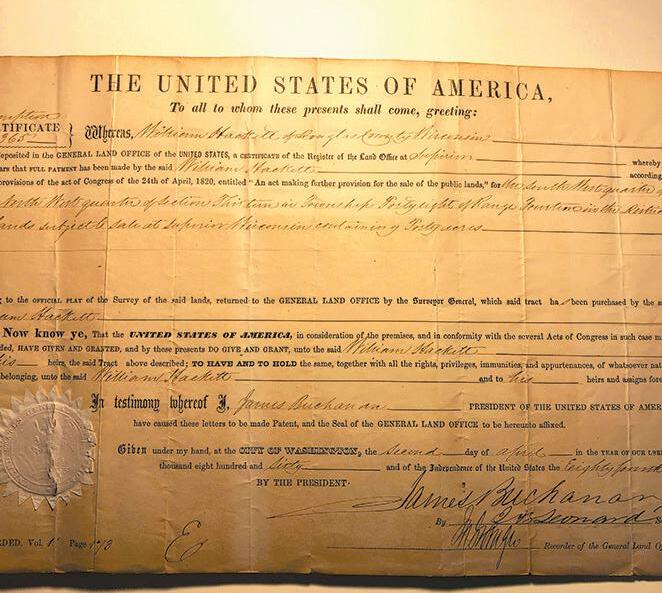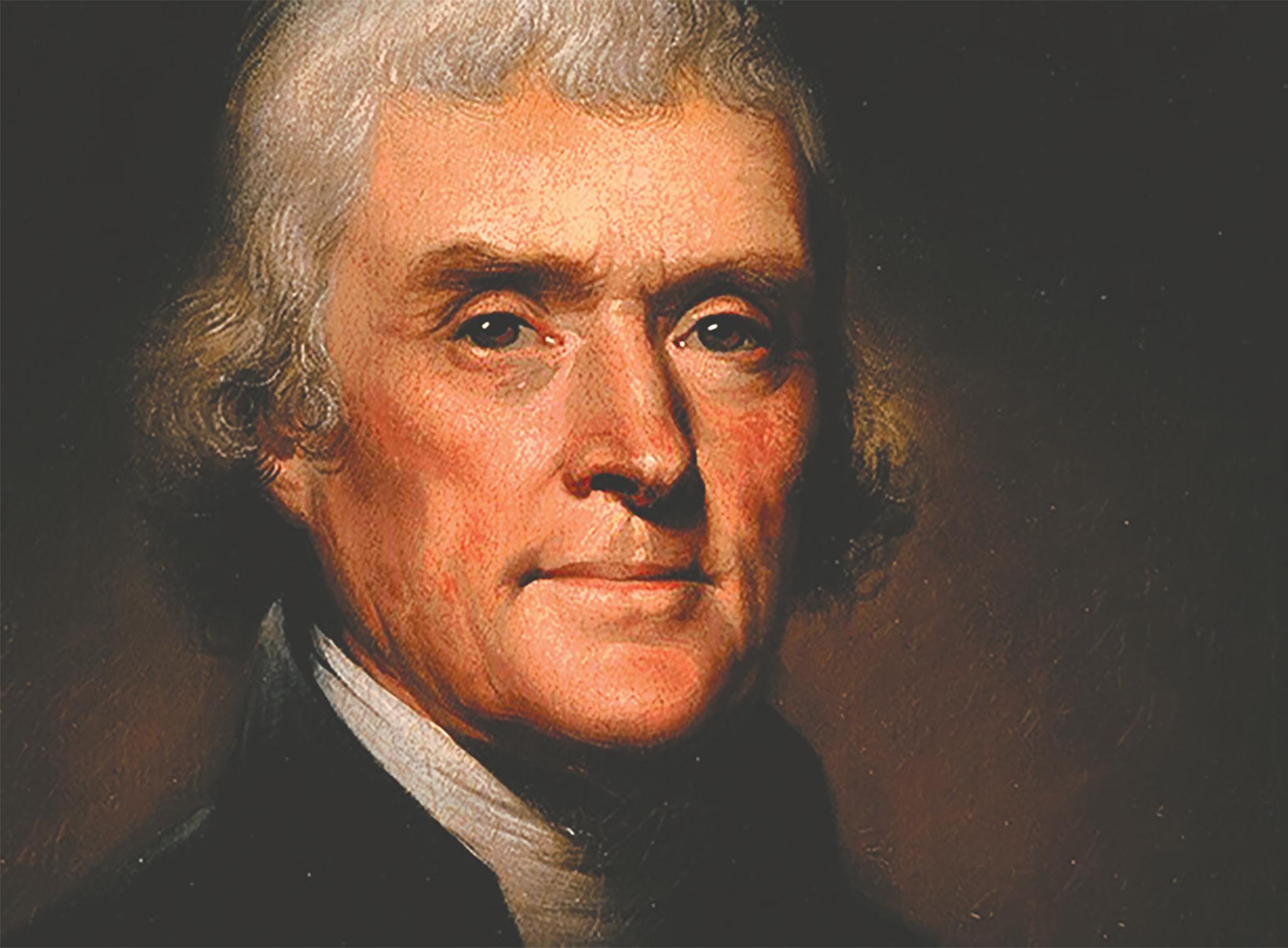
3 minute read
2nd
John Adams was born in 1735 to Henry and Susanna Boylston Adams. Adams graduated from Harvard University in 1755 and became an attorney in 1758. From an early age, Adams developed intense feelings for political causes. He wrote powerful speeches against the Stamp Act of 1765 but also defended British soldiers charged with murder after the Boston Massacre. In 1764, he married Abigail Smith. Together they would have five children, including future president John Quincy Adams. Their marriage would provide a source of comfort for John during his years away from her negotiating in Europe.
In 1771, Adams was elected to the Massachusetts House of Representatives, and later, to the Continental Congress in 1774. Adams carried great influence among the members of Congress and strongly favored separation from England. Adams also assisted in the drafting of the Declaration of Independence and the Massachusetts Constitution. He quickly became a vocal leader in the quest for independence and gained a reputation for being incorruptible, stubborn, and fiery. After spending several years negotiating business treaties with European powers at the conclusion of the Revolutionary War, Adams was elected as the second president of the United States (he lost to George Washington previously and served two terms as his vice president). His presidency, however, was marred by the passage of the Alien and Sedition Acts, controversy within his Federalist Party regarding foreign policy, and a general feeling that Federalists relied more on the ideas of Alexander Hamilton than his. Adams was defeated by Thomas Jefferson in 1800 in his bid for a second term in the presidency.
After completing his term as president, Adams became depressed and moved back to his home, called Peacefield, near Quincy, Massachu- setts. He completely dropped out of politics. In 1812, however, he began corresponding with Thomas Jefferson, and the two former presidents sent letters to each other for fourteen years about politics, government, and philosophy. In 1825, his son, John Quincy Adams, was elected as America’s sixth president. On July 4, 1826, the 50th anniversary of the adoption of the Decla- ration of Independence, John Adams died at his home. Ironically, his friend and fellow Founding Father Thomas Jefferson died the same day, only hours before him.



Today, John Adams is remembered as one of the Founding Fathers. For much of history, however, he was overshadowed by the likes of Thomas Jefferson, George Washington, and Benjamin Franklin (whom Adams detested). Recently, however, Adams has been brought back into significance with the famous David McCullough novel called John Adams, which was turned into a popular seven-part film.

Thomas Jefferson was born April 13, 1743 in Albemarle County, Virginia. When he was 14, he inherited his father’s estate and slaves. Soon after, Jefferson attended the College of William and Mary where he studied mathematics, metaphysics, and philosophy. In 1767, Jefferson was admitted to the Virginia Bar and practiced law. Jefferson remained influential at the College of William and Mary throughout his life and helped institute the nation’s first student honor code.
In 1769, when he was just 26, Jefferson was elected to the Virginia House of Representatives. In 1772, Jefferson began building his home, Monticello. That same year, he married Martha Wayles Skelton. The couple would eventually have six children.
As a member of the Second

Continental Congress, Jefferson drafted the Declaration of Independence with help from Benjamin Franklin and others. In 1779, he was elected as governor of Virginia. Although he resigned in 1781, during his term as governor, Jefferson wrote the famous statute on religious freedom. Jefferson’s writings also formed the basis of the Ordinances of 1784, 1785, and 1787. From 1785–1789, Jefferson served as minister to France. In 1789, George Washington appointed him secretary of state.
Due to political differences concerning the role of the government with other cabinet members, Jefferson resigned as secretary of state in 1793. After serving in Washington’s cabinet, Jefferson and James Madison founded the Democratic-Republican Party. Jefferson soon ran for president but was defeated in 1796 by John Adams. Nevertheless, he was appointed vice president. Although Jefferson and Aaron Burr received equal electoral votes for presidency, Jefferson was elected president by the House of Representatives in 1800. During Jefferson’s term, both the Louisiana Purchase and the Lewis and Clark Expedition occurred.
Jefferson served two presidential terms. He later established the University of Virginia. He died on July 4, 1826, the 50th anniversary of the Declaration of Independence. Coincidentally, John Adams died the same day.
Thomas Jefferson is remembered as one of the most brilliant men to ever inhabit the White House, whose views on individual freedom, religion, and education still influence today. In fact, the establishment of the University of Virginia reflected Jefferson’s views about the role of religion in education— it was the first university in America to be centered around a library rather than a church. Jefferson believed in the strict separation of church and state (national affairs, including education, should not be influenced by a dominant religion). Jefferson was also an accomplished surveyor, author, architect, and agriculturalist.

Today, buildings, cities, counties, corporations, and monuments bear Jefferson’s name. He is honored on the United States two-dollar bill and nickel.










